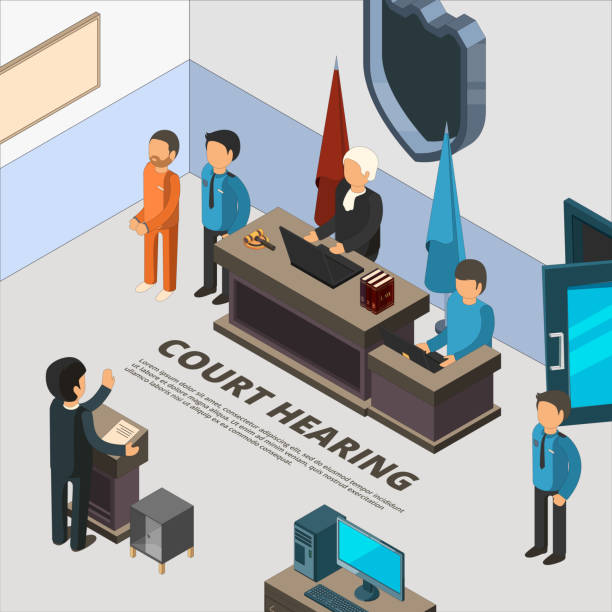Leveraging Technology for Judicial Efficiency: How Court Interpreter Scheduling Software is Changing the Game
The legal domain relies on precision, clarity, and timely action. Making sure everyone understands each other, especially when different languages are involved, is really important in this setting.
Traditionally, coordinating interpreters for court sessions was a task that often involved manual scheduling, potential errors, and last-minute scrambles.

However, the landscape is changing rapidly.
Today, technological advancements are reshaping the way courts function, with innovative software solutions leading the charge.
In this article, we’ll explain the transformative impact of integrating technology into interpreter scheduling, focusing on the main problems, how to solve them, and what the future holds for this important area where law and technology meet.
What is a Court Interpreter Scheduling Software?
Court interpreter scheduling software is a digital tool designed to streamline the process of scheduling, managing, and coordinating interpreters in the court system.
Ensuring that interpreters are available, appropriately matched to the language needs, and scheduled efficiently is vital in legal settings to guarantee clear and accurate communication among all parties involved.

In a practical context, interpreter scheduling is not only a logistical task but also a crucial element in ensuring fair and accurate legal proceedings.
Take, for instance, the careful coordination and scheduling guidelines laid out by the Central District Court of California, which underscores the meticulous planning and flexibility required in real-world scenarios. This kind of approach underscores the necessity for innovative digital tools that can handle the complex and dynamic nature of court interpreter scheduling.
This type of software often provides features such as:
- Automated Scheduling: Easily schedule interpreters, avoid double-booking, and manage changes or cancellations.
- Language Matching: Ensure that the interpreter is fluent in the required languages and dialects.
- Compliance and Certification Management: Verify and track the qualifications and certifications of interpreters to ensure legal compliance.
- Billing and Invoicing: Manage financial aspects, such as payments to interpreters, billing clients, and tracking financial data.
- Reporting: Generate reports related to interpreter usage, cost, and other relevant metrics.
- Communication: Facilitate seamless communication between court administrators, interpreters, and other stakeholders.
- Remote Access: Some software offers remote or mobile access, enabling scheduling and management on the go.
These features work together to alleviate the administrative burden and reduce errors related to manual scheduling and management. The end goal is to facilitate efficient and effective communication in courtrooms, ensuring that language barriers do not hinder the process of justice.
Challenges of using a Court Interpreter Scheduling Software
Implementing and utilizing court interpreter scheduling software can present several challenges, even as it aims to streamline and improve processes within the judicial system. Here are some of the top challenges that might be encountered:
- User Adaptability: Getting users (such as court administrators, interpreters, and other staff) to adapt to new technology can be difficult, especially if they are accustomed to manual processes.
- Integration with Existing Systems: Ensuring that the software integrates seamlessly with existing systems (like court management systems) to allow smooth data exchange and coordination.
- Technical Support and Training: Providing adequate training and support to all users to ensure they can utilize all functionalities effectively.
- Data Security and Privacy: Protecting sensitive information and ensuring that the software complies with data protection regulations is crucial.
- Customization Needs: Adapting the software to meet the specific needs and workflows of different court systems might require additional customization.
- Remote and Mobile Access: Facilitating access to the system remotely or via mobile devices without compromising security or functionality.
- Legal and Regulatory Compliance: Ensuring the software adheres to legal standards and regulatory requirements related to court proceedings and language services.
- Quality Assurance: Ensuring that the automated processes do not compromise the quality and accuracy of interpreter scheduling and that the right interpreter is matched to the right case.
- System Downtime and Reliability: Making sure the software is consistently reliable and any downtime (for updates or technical issues) does not disrupt court proceedings.
Addressing these challenges requires a robust implementation strategy, continuous support, training programs, and a strong partnership with the software provider to ensure that the technology truly enhances and optimizes the interpreter scheduling and management processes within the court system.
What are Benefits of Having a Court Interpreter Scheduling Software?

Court interpreter scheduling software brings numerous benefits to the judicial system by automating, organizing, and optimizing the coordination of interpreters. Here are some key advantages:
- Streamlined Operations and Enhanced Efficiency: Utilizing court interpreter scheduling software automates and optimizes the process of matching qualified interpreters with corresponding case requirements, considerably reducing manual administrative efforts and associated errors.
- Improved Accuracy and Quality of Interpretation Services: Ensuring precise pairing, the software assures that interpreters with the appropriate linguistic skills and expertise are assigned accurately, bolstering the quality and reliability of interpretation in court proceedings.
- Robust Data Management and Insightful Reporting: The software provides a centralized platform for managing critical data pertaining to interpreter assignments, availability, and expenses, while also offering analytical reports to enhance decision-making and operational insights.
- Cost Reduction and Resource Optimization: By minimizing administrative time, enhancing scheduling accuracy, and optimizing the utilization of available interpreters, the software contributes to operational cost savings and ensures effective use of resources.
- Accessibility, Inclusivity, and Improved Service Delivery: Ensuring timely availability of skilled interpreters facilitates smoother court proceedings and reinforces accessibility and inclusivity within the judicial system, ultimately enhancing the delivery of services to individuals irrespective of their language proficiency.
In essence, court interpreter scheduling software fosters a harmonious coordination of interpretation services, thereby enhancing the operational efficiency, service quality, and accessibility of the judicial system, ensuring that justice is attainable and equitable for individuals across diverse linguistic backgrounds.
Conclusion
Embracing technology to refine and improve judicial processes is more than a modernization effort; it’s a necessary step towards ensuring that justice is both accessible and efficiently delivered to every individual, regardless of language barriers.
Historically, the task of matching court sessions with the right interpreters was prone to manual errors and last-minute confusion.
Thankfully, the digital age has ushered in transformative solutions like court interpreter scheduling software, which has become an invaluable asset to our courts.
Court interpreter scheduling software not only minimizes manual hassles but elevates the entire spectrum of court proceedings by ensuring accurate communication, efficient administration, and an inclusive justice system.
For those who envision a more streamlined, efficient, and inclusive judicial system, the next step is clear.
Dive deeper, understand more, and explore the possibilities that modern interpreter scheduling solutions offer.
Discover how Interpreter.io is at the forefront of this revolution, equipped with features and insights that can transform the very fabric of courtroom communication.
Explore the opportunities with Interpreter.io, where innovative solutions meet judicial efficiency, and pave the way towards a future where language is not a barrier but a bridge to a fair, equitable, and timely justice.
For more information, contact us now!
